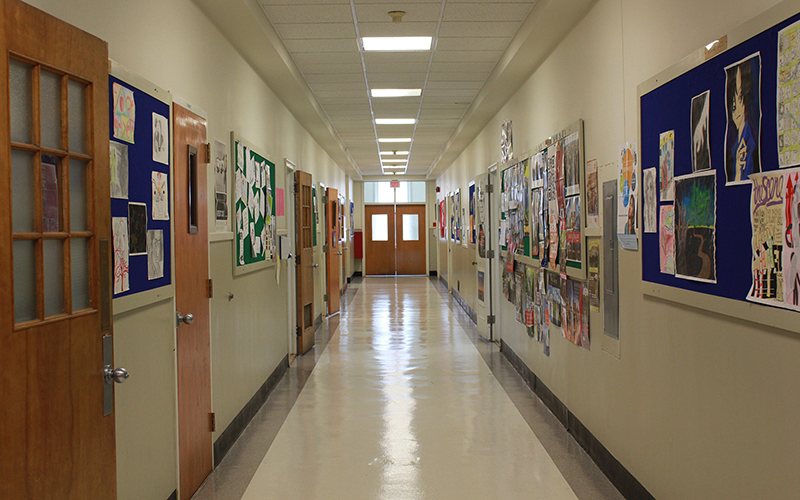WASHINGTON – The state added nearly 12,000 students to the Empowerment Scholarship Account program in the last quarter, bringing total enrollment to 61,689 at the end of June and renewing debates about the costs and benefits of the program.
In the year since Arizona began offering universal ESA, close to 50,000 students have flocked to the program that redirects public school funding directly to families to pay for their children’s education – in private, charter or homeschool settings.
The Arizona Department of Education predicted in May that there could be as many as 100,000 students enrolled by this time next year, growth that they say reflects the popularity of the program. But critics say it will blow a $320 million hole in the state budget next year while depriving public schools of badly needed funding.
“They (ESA vouchers) directly subtract from local public schools, and public schools are already starved to the bone in Arizona,” said Beth Lewis, the director of Save Our Schools Arizona, which opposed the expansion of the ESA program.
“Every cent that leaves our classrooms means that more and more kids are not getting what they need. And we already know that a lot of students are already not getting what they need,” said Lewis, an Arizona teacher for 12 years.
But Joe Setyon, a spokesperson from the Goldwater Institute, said that funding for the program creates school choice options for parents in Arizona.
“It is parents who know what is best for their children,” Setyon said. “ESAs are huge because they allow parents to customize their child’s education based around … their child’s unique needs.”
The program grew out of the state’s school voucher program that was originally aimed to provide financial aid that would let students with special needs or disabilities attend schools other than their local public school. In 2022, the Legislature made the program universal, making any K-12 student eligible for an ESA scholarship, including those enrolled in private schools.
Supporters said the expansion would not cost the state in the long run, since it would be reducing public school enrollment and merely redirecting the money that would be spent on them there.
But an analysis by Gov. Katie Hobbs’ office in July said that was not the case. The report said that more than half of the funding for the program were new costs to the state, since many of those enrolling under the universal program “were previously enrolled in private school, homeschooling, or were attending non-state aid schools prior to transferring.”
At current rates of growth, the report said, more than half of new K-12 spending for fiscal 2024 budget would go to ESA students, who make up only 8% of all students in the state. If enrollment nears 100,000 in the next year, as projected, it would require about $900 million in state funding.
“The universal school voucher program is unsustainable,” Hobbs said in a statement at the time. “Unaccountable school vouchers do not save taxpayer money, and they do not provide a better education for Arizona students.”
But Arizona Superintendent Tom Horne continues to advocate for school choice, likening state-funded public schools to “a government monopoly.”

Protesters turned out at the State Capitol in March to defend the Empowerment Scholarship Account program, including Tajiri Freedom, the principal of New Gains Academy. (File photo by Emily Mai/Cronkite News)
“That’s why the United States was prosperous and the Soviet Union was poor because we had competition where everybody works hard and produces a lot,” Horne said in an interview last week. “When you’re in competition, you have an incentive to do your very best. Whereas when you’re a government monopoly, that incentive is not there.”
Horne’s comments came before his department released the fourth quarter enrollment numbers Friday. They showed that overall ESA enrollment was 61,689, with 45,157 of those in the universal program. The rest are special needs students or others in categories covered by the voucher program before it expanded to universal availability.
At this time last year, there were 12,127 students in the ESA program, according to the Education Department. Virtually all of the growth in the program has been among universal voucher students.
Besides taking money from public schools, critics complain that the program directs it to private schools that are not subject to the rigorous testing that public schools face.
Max Goshert, a researcher at the Grand Canyon Institute, said that the lack of oversight could mean parents will see less transparency than they would in public schools.
“If parents just want to look to see what the academic outcomes of a school are, they can’t,” Goshert said. “The only thing that they can do is look at whatever marketing materials the school has put out or whatever data the school has decided to share.
“There’s no backstop right now, no safeguard in Arizona to ensure that students are actually learning. The only thing that these private schools have to do is offer some kind of curriculum in a set of subjects,” he said.
Emily Kirkland, the spokesperson for the Arizona Education Association, said that public schools and educators are held to “tremendously high standards” by comparison.
“So, it’s almost impossible to know what are students learning, are they learning what they need to be learning to be successful later in life. And who is providing the services that our taxpayer dollars are ultimately going towards?” she asked.
Those taxpayer dollars are consistently scarce in Arizona: The national average per-pupil spending in 2021 was $14,347 per year, compared to $9,611 in Arizona. The state’s funding for public education per student ranked 48th in the nation.
Given that history, Lewis said, “education shouldn’t be about competition” as Horne argues.
“I think that Mr. Horne seems to be perfectly fine with the fact that we’re creating a system of haves and have-nots that’s two-tiered and rife with segregation. But I am not OK with that,” she said.



